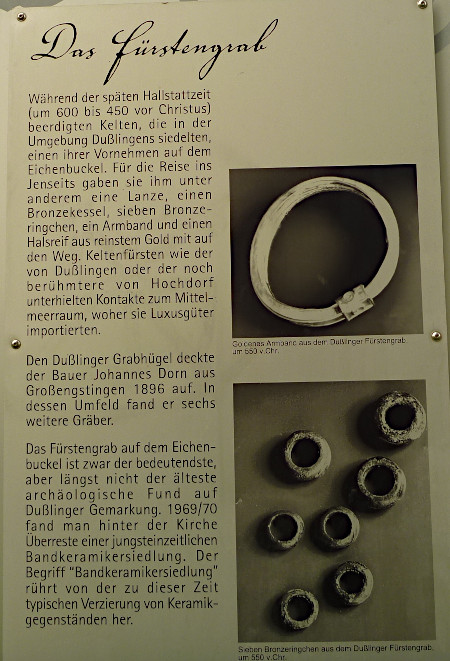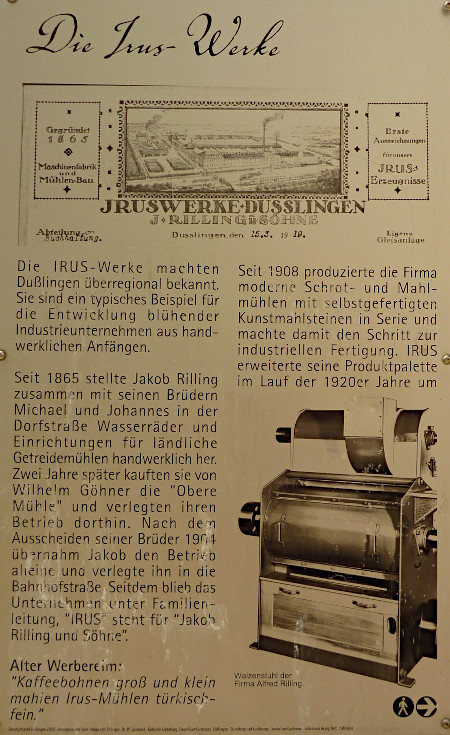
The princely grave
During the late Hallstatt period (around 600 to 450 BC), Celts who settled in the Dußlingen area buried one of their nobles on the Eichenhumpel. For the journey into the afterlife they gave him, among other things, a lance, a bronze cauldron, seven bronze rings, a bracelet and a necklace made of the purest gold. Celtic princes like the von Dußlingen or the even more famous von Hochdorf maintained contacts with the Mediterranean region, from where they imported luxury goods.
The Dußlingen burial mound was uncovered by the farmer Johannes Dorn from Großengstingen in 1896. He found six more graves in the area.
The prince's grave on the Eichenhumpel is the most important, but by no means the oldest archaeological find in the Dußlingen district. In 1969/70 the remains of a Neolithic ceramic band settlement were found behind the church. The term "Bandkeramikersiedlung" comes from the typical decoration of ceramic objects at that time.
[Golden bracelet from the Dußlingen prince's grave around 550 B.C.]
[Seven bronze rings from the Dußlingen prince's grave around 550 B.C.]

